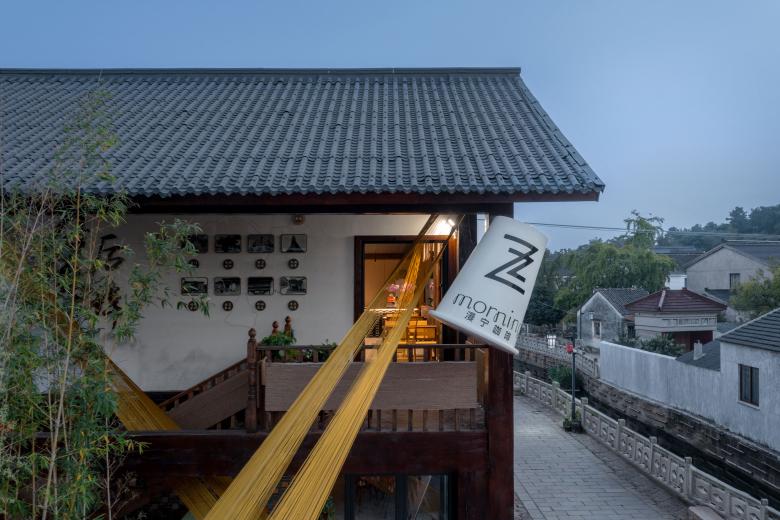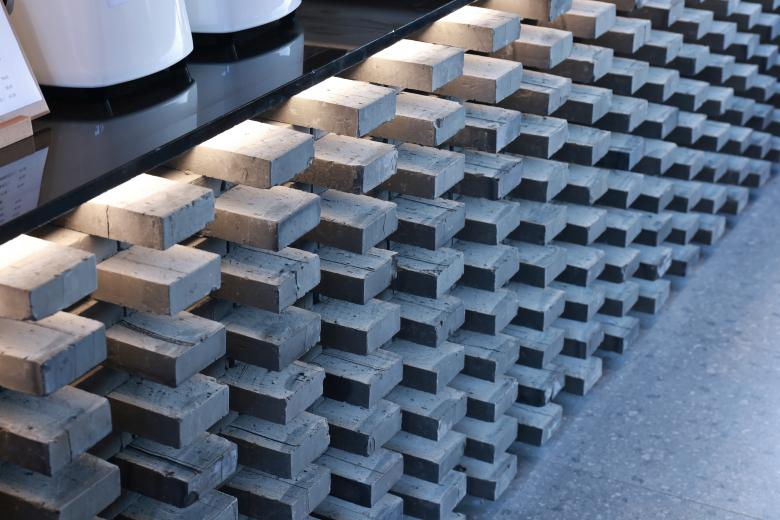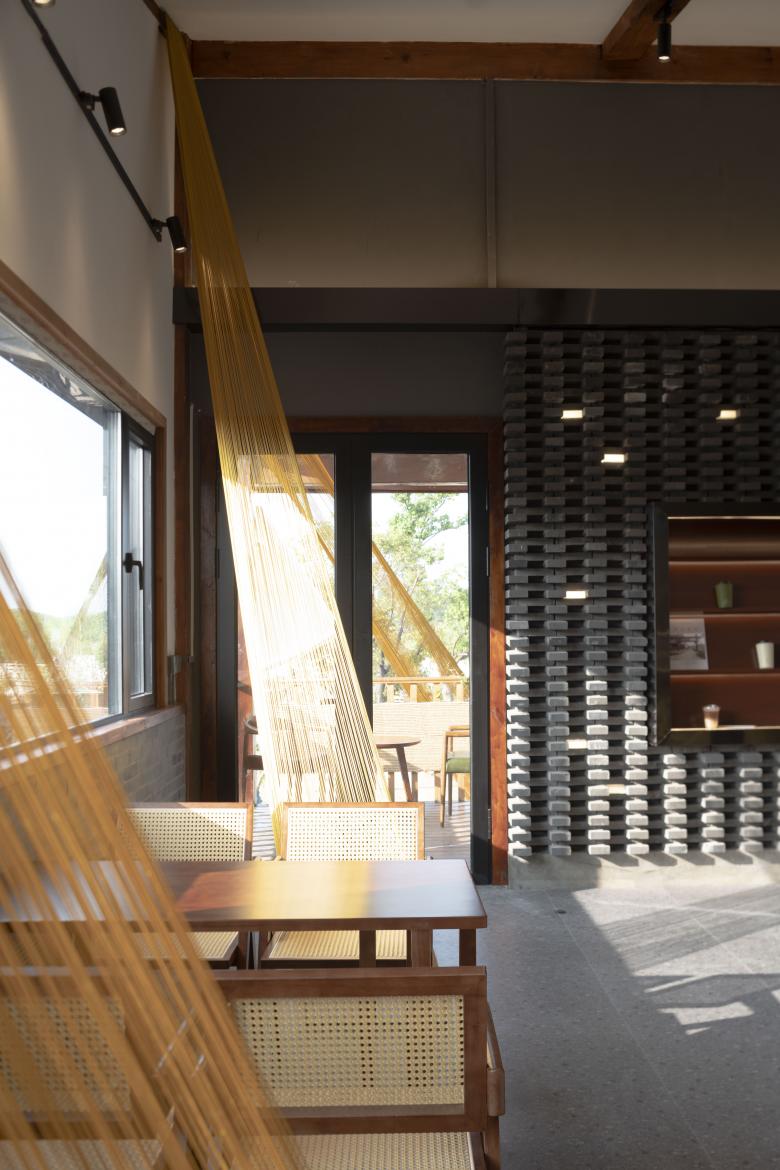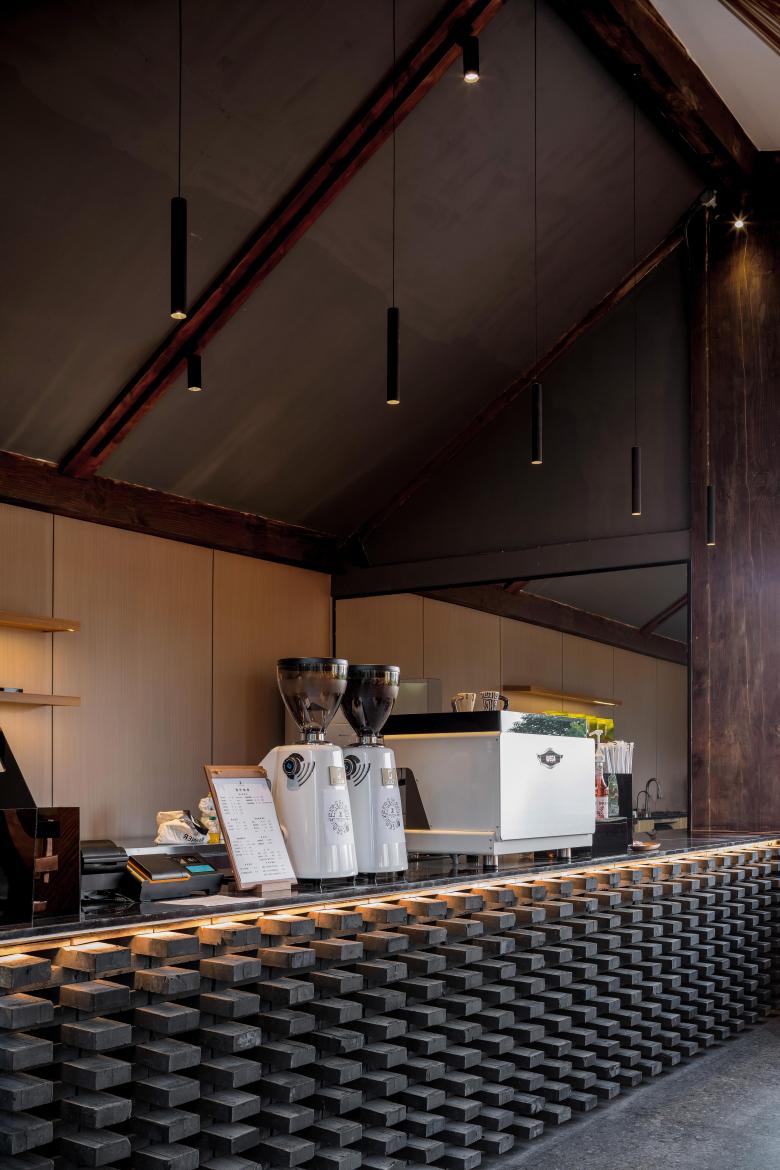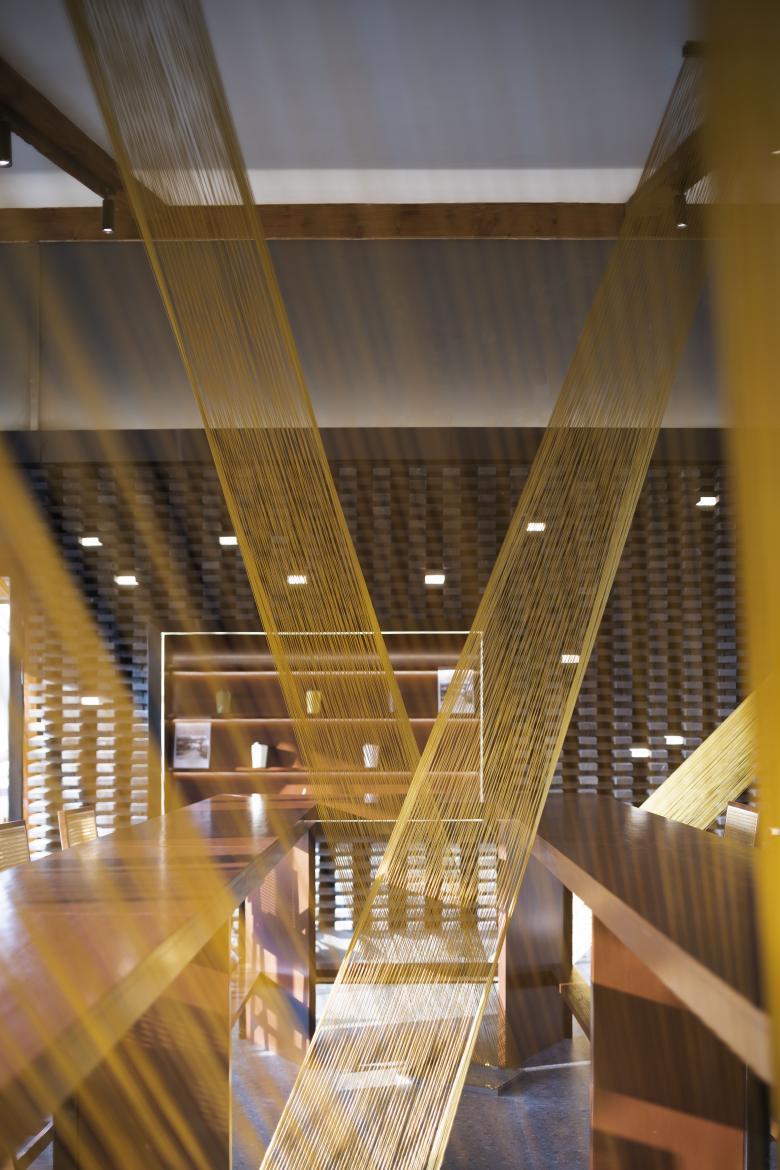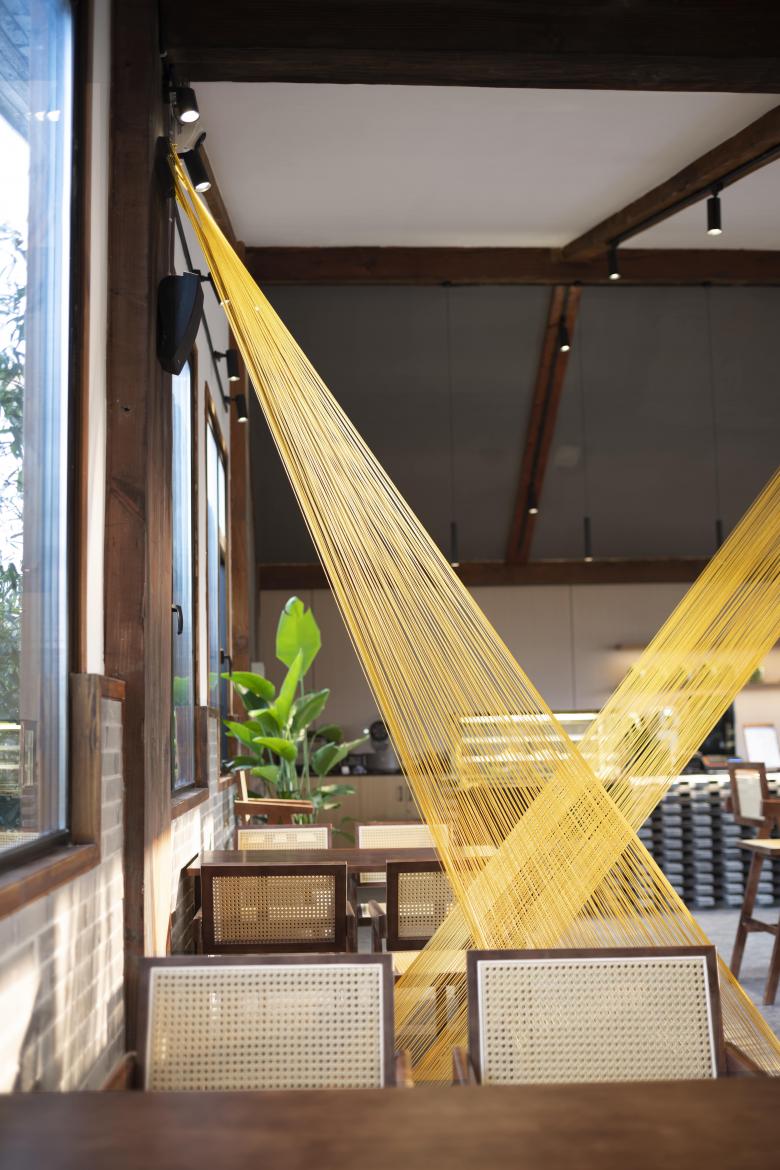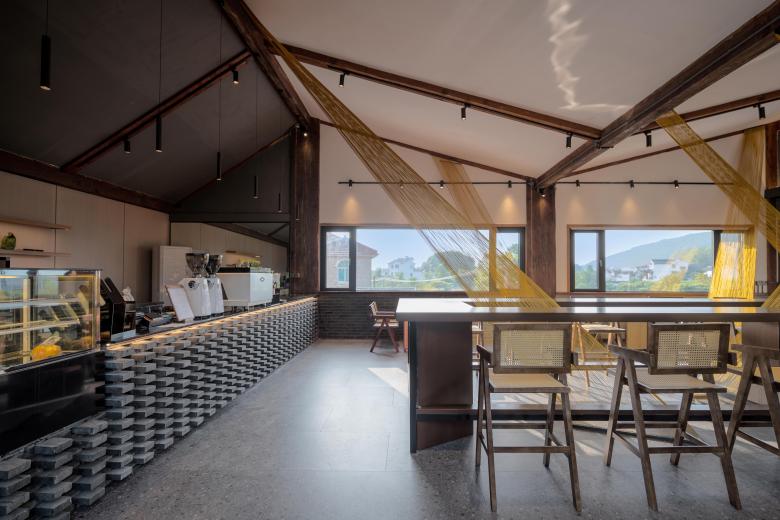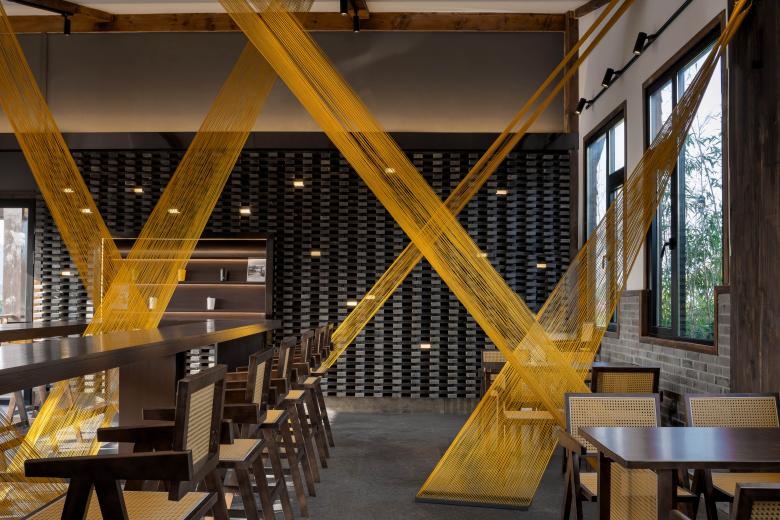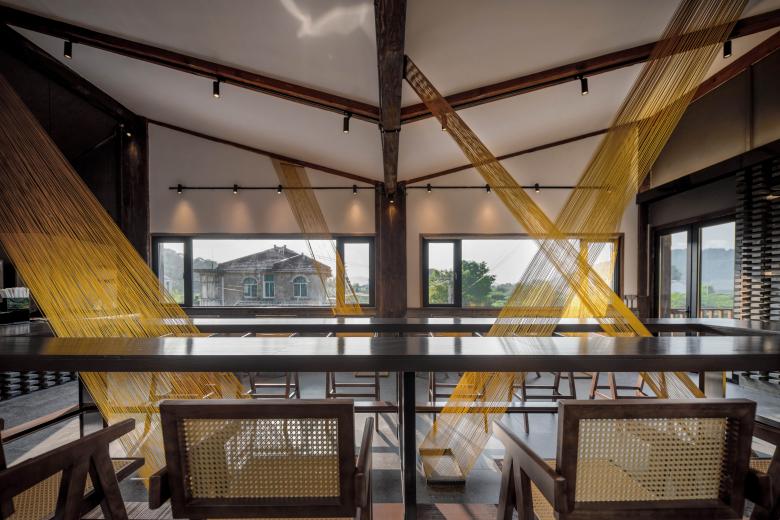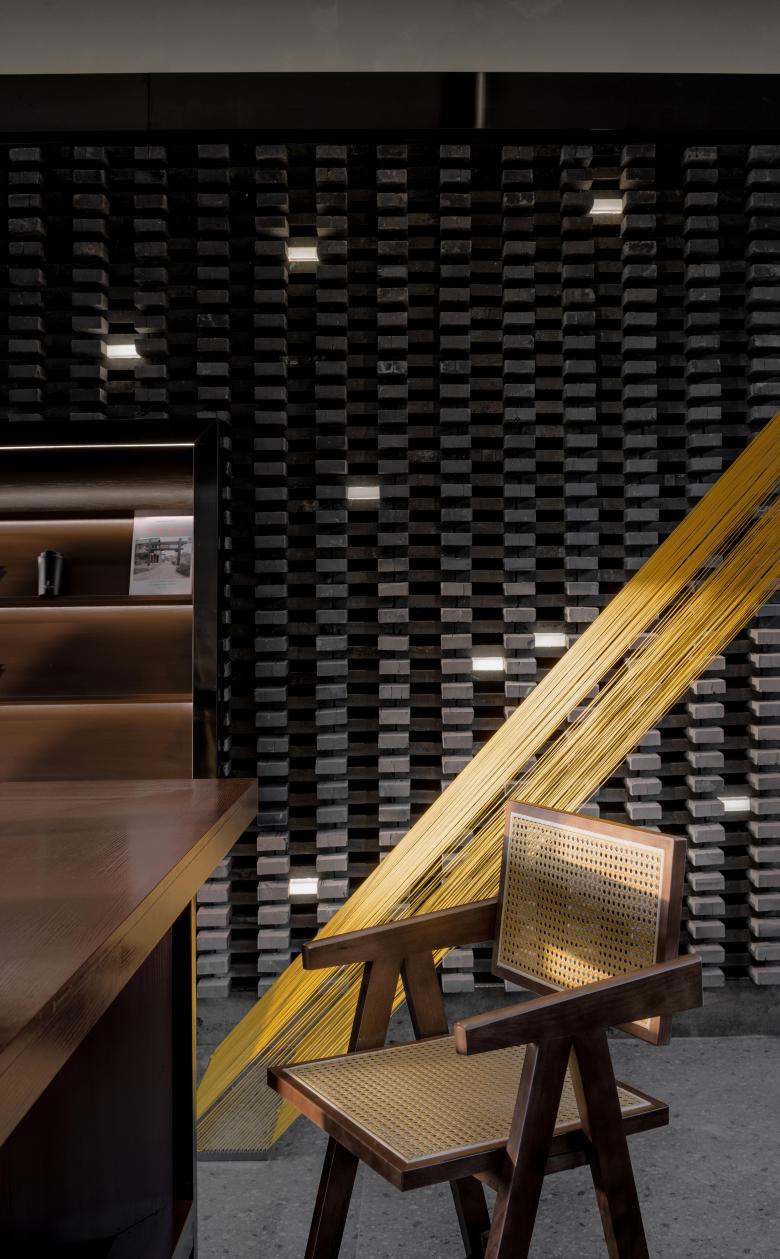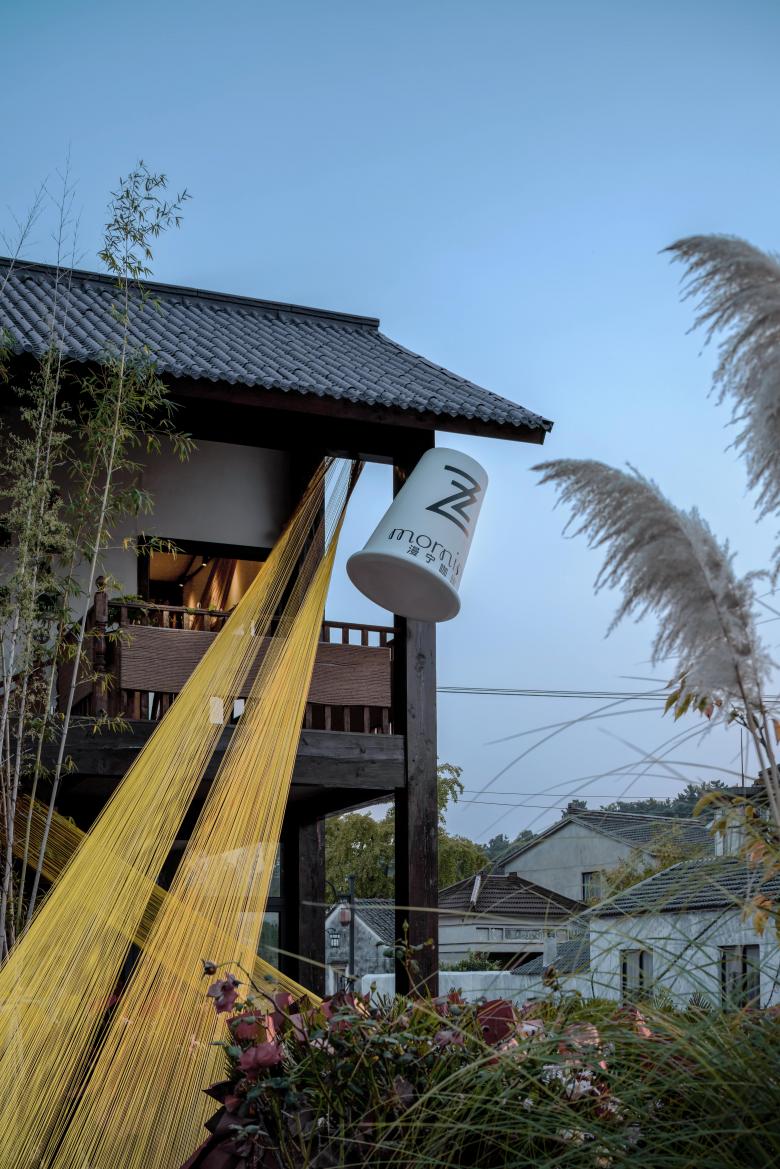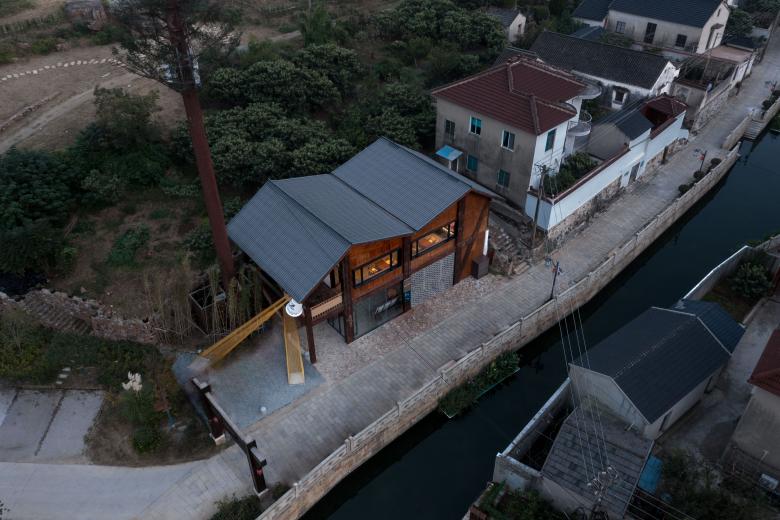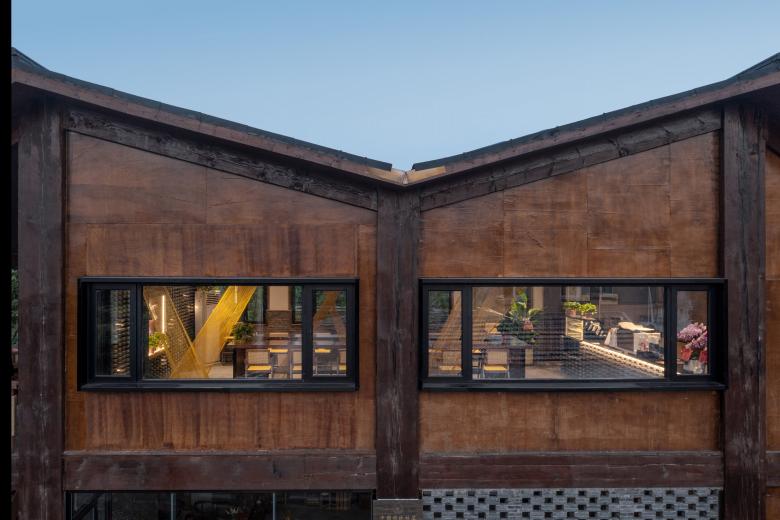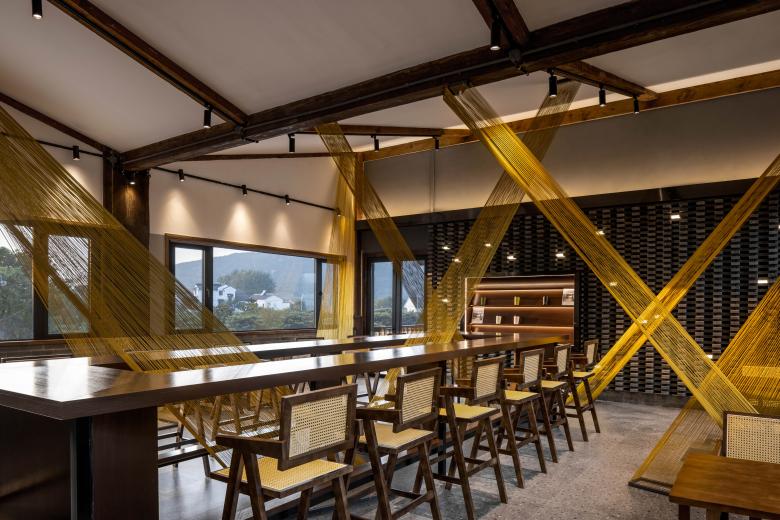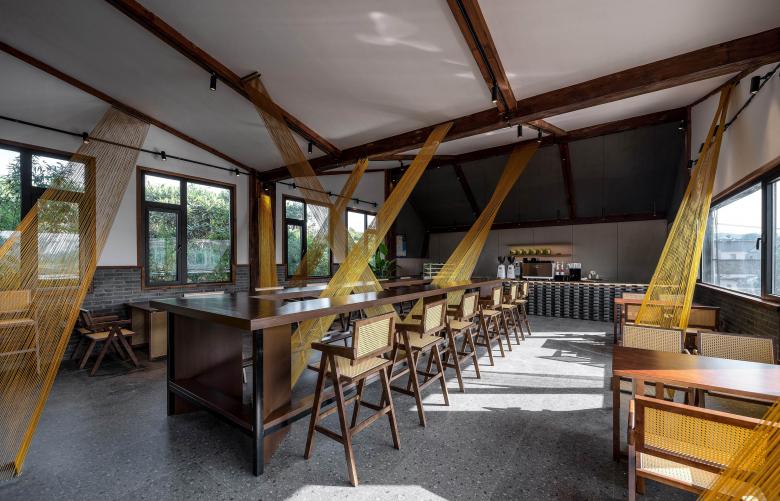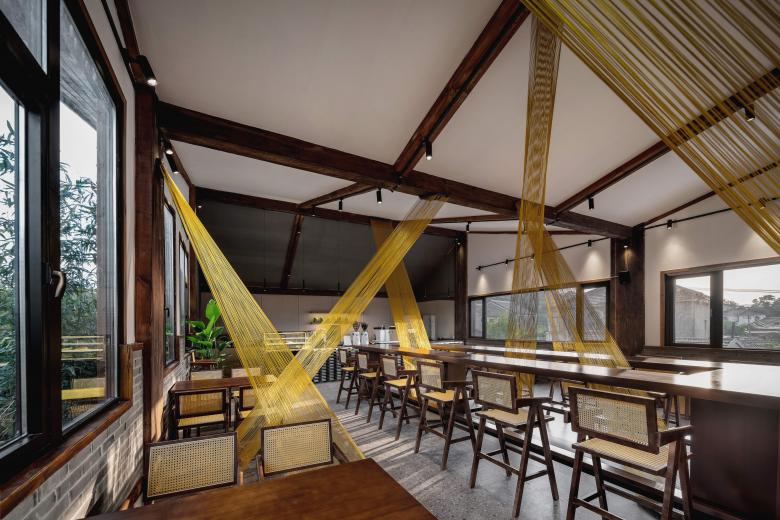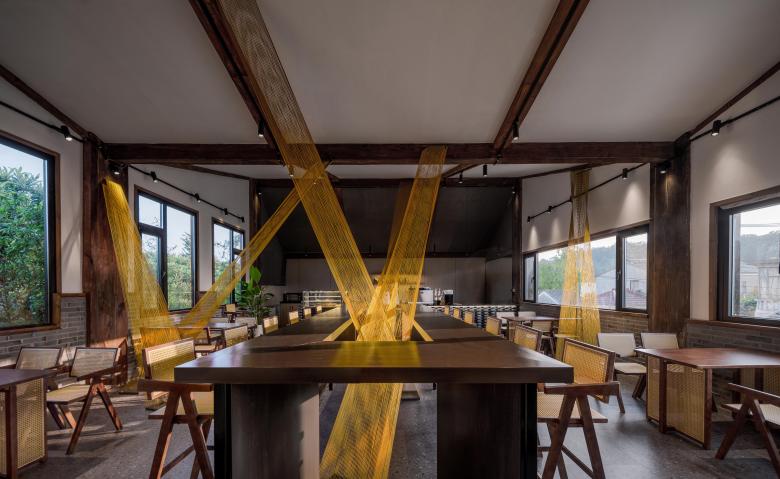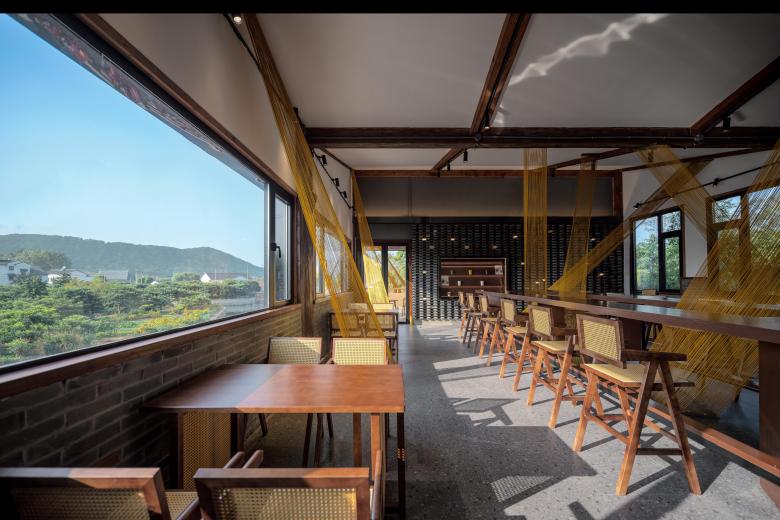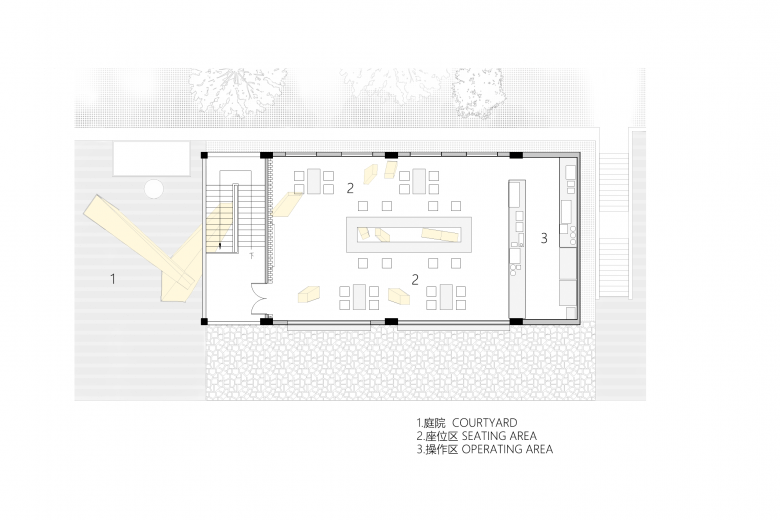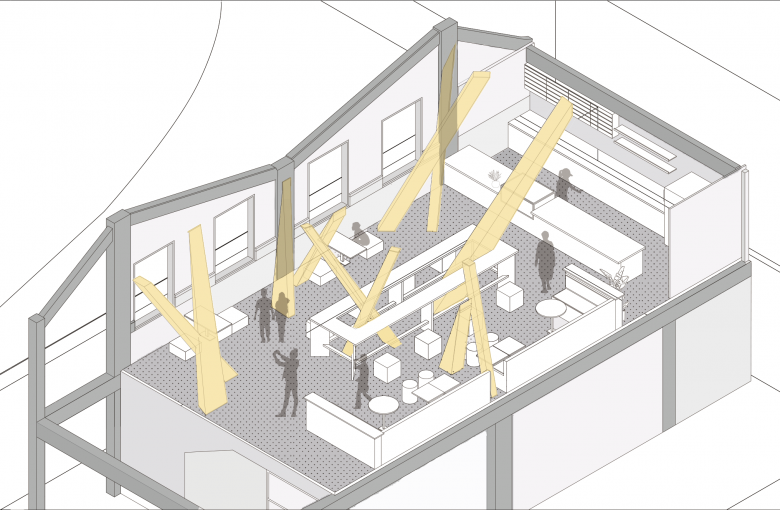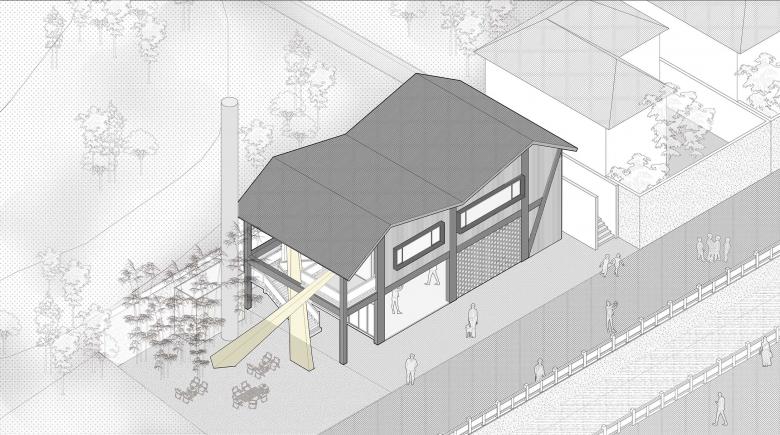Houbu Ancient Village Post Station
Suzhou Industrial Park
- Architects
- Parallect Design
- Location
- 后埠村, Suzhou Industrial Park
- Year
- 2023
- Client
- 漫宁咖啡
- Team
- 吴斯,杨楠
The project is located on the second floor of the stagecoach station at the entrance to the ancient village of Houbu on Xishan Island, Taihu Lake, Suzhou. Pushing open the window on the second floor, you can see the small river running through the ancient village. Houbu Village is now a Chinese traditional village and an ancient village under the control and protection of Suzhou. The village was formed in the Southern Song Dynasty and was called Meiliangli in ancient times. After the Ming Dynasty, it was renamed Houbu due to the setting up of a stone wharf in the lake bay in front of the mountain at the time of Yu (the name of the place is Qianwan) and the setting up of a boat port for mooring boats behind the mountain. The ancient village, which has not been commercially developed, has been restored and protected, and has also preserved the atmosphere of nature and life to the greatest extent possible. It has become a precious place for people to stop and take a breather in the economically developed city. Therefore, the design of this project hopes to create a stagecoach café at the entrance of the ancient village to connect the past and present, so that tourists can enjoy the charm of the historical village while taking a rest and revitalize the once-unattended ancient village.
Houbu Village was originally a fishing village, the fishing boats and nets have been extinguished in time, only the old photos on the wall of the post station and the brochures are left to record the distant history. Tracing the traces of time left in this ancient village, we hope to re-create a scene where modernity and history meets. The "Line of Time" itself is fixed, twisting and extending in three dimensions. The installation can be seen to take on different effects as the observer moves through the scene. The finished result was also a pleasant surprise, as the fiber optic light coming in from the west window in the afternoon mirrored the light we created, giving the space a warm and serene atmosphere.
Unlike commercial spaces in the city, this design needed to decipher how to harmonize the commercial nature of the café with the cultural attributes of the history of the ancient village in the historical district. The café is on the second floor of the stagecoach station, so it needs a way to channel its commerce. The utilization of the open space on the first floor was our final choice. A beam-shaped installation made of nylon thread extends from the entrance on the second floor to the outdoor courtyard on the first floor, bringing the focus of the eye to the entrance on the second floor.
The meandering river downstairs and the hazy distant mountains after the rain provide excellent natural landscape for the scene, so the building was remodeled to incorporate the natural landscape into the interior by adapting the windows into two strip windows, using the gardening techniques of the classical Suzhou gardens.
The whole building is a wooden structure with a quiet and rustic surrounding, and the owner also wanted the overall atmosphere of the store to be in line with the ancient village, so we chose brick and wood as the overall materials with traditional and natural characteristics to echo the specificity of the site. Natural walnut and dark gray brick were used as the main materials for the interior space, bringing a harmonious and aesthetic contrast. The warmth of the walnut is complemented by the gray brick, which brings a unique texture to the bar and the walls on the first floor, while giving the space a sophisticated detailing and spatial character.
In this practice, the main challenge for the design team was to resolve the conflict between modern commercial needs and historical and cultural preservation. How to integrate traditional elements into the design while meeting the functional needs of the space was both a challenge and an opportunity. Through the study of the ancient village and its history, we chose to use traditional materials and modern techniques to create a contrasting fusion between the old and the new, and to narrate the story through the space itself. To create a public activity place for the ancient city that promotes neighborhood communication and provides tourists with guided tours.
Related Projects
Magazine
-
Building Bridges with Chris Luebkeman
1 day ago
-
Winners of 2024 EU Mies Awards Announced
1 day ago
-
WENG’s Factory / Co-Working Space
5 days ago
-
Reusing the Olympic Roof
1 week ago
